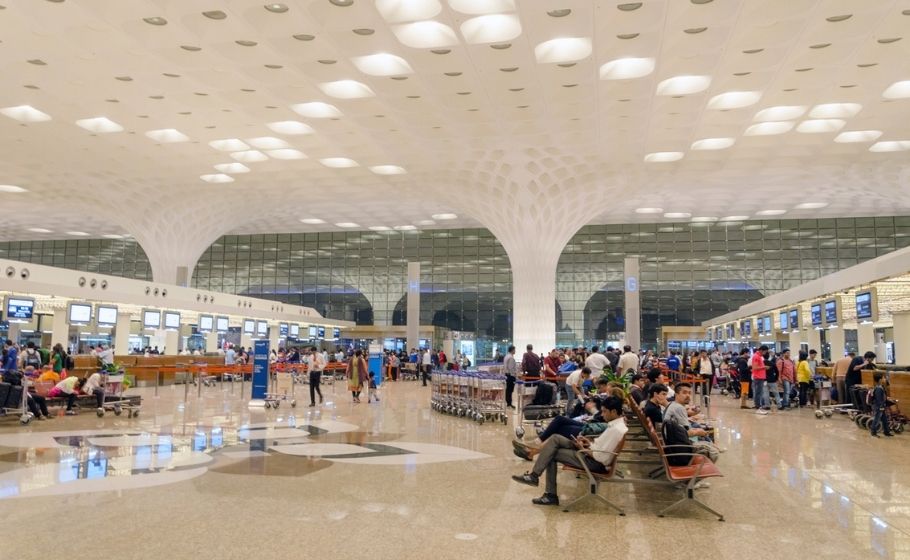
Turbulent times: ‘Major airports suffer ₹10-crore loss every single day’
Domestic traffic is down to less than a fourth of pre-COVID times and international traffic is at a tenth of what it was. With flights curtailed and no normalcy in store, airports are staring at a bleak future.

After a drastic fall in passenger numbers last month, India’s busiest airport in New Delhi shut down Terminal 2. Mumbai’s International Airport too followed suit. The pandemic’s deadly second wave has dealt a severe blow to India’s fragile airport sector, already reeling under a financial crunch because of travel restrictions.
According to rough calculations, these airports suffer ₹10-crore loss every single day after the pandemic virtually brought everything to a standstill.
Domestic traffic is down to less than a fourth of pre-COVID times and international traffic is at a tenth of what it was. With flights curtailed and no normalcy in store, airports are staring at a bleak future.
Airports have their revenue streams categorized under two heads: Aeronautical and non-aeronautical. The first refers to charges they collect from airlines for offering services such as landing, parking, and navigation, etc. Second, revenue from activities such as duty-free shopping. For most Indian airports, earnings from aeronautical streams account for anywhere between 30-50% of the total revenue.
Sidharath Kapur, an airport sector veteran, says airports have been hit hard because of the squeeze in non-aeronautical revenues.
Also read: Count calories, stay fit, and pay lower insurance premium
“Aeronautical revenue has an in-built recovery mechanism through an increase in charges in the future. The regulator factors in eligibility and allows operators to raise charges to recoup the lost revenue. But in the case of non-aeronautical revenue streams, a large part of the lost revenue cannot be retrieved,” says Kapur.
So it is on the non-aeronautical revenue front that airports are facing challenges.
The near-complete ban on foreign travel was the crippling blow. India has the world’s third-largest domestic market and in terms of actual number of passengers, international travel is not a significant growth driver for either airlines or airports. But for airports, international travellers are like “a hen that lays the golden egg” since these high-end travellers tend to spend more. They shop more at duty-free shops and airports earn anywhere up to a fifth of their non-aeronautical revenue from these businesses.
Also read: Automobile sales skid sharply as rural markets take COVID punch
An association of private airports has said that these airports are estimated to have posted a cash loss of nearly Rs 10 crore every single day in 2020-21 as passenger traffic (domestic plus international) slipped by two-third. Operating income is estimated to have declined by 61% and margins have been squeezed by a fifth. Four private airports – Delhi, Mumbai, Bengaluru and Hyderabad – account for every second Indian passenger. Among private airports in the country, 9 in 10 passengers take a flight from one of these four airports.
Faced with unprecedented crunch, airport operators have taken cost-cutting measures such as closing down terminals, reducing contractual staff, etc.
But there is a catch.
The Association of Private Airport Operators (APAO) says much of the cost structure for airport functioning is fixed. Fixed costs include money for maintaining and operating runways, taxiways, aprons, parking bays and terminal buildings, etc.
“Of the total cost incurred, 80-85% is fixed cost. So, while on one side, revenues have dried up, on the other airports have to continue incurring high costs which are fixed. Airports are the worst affected in the aviation sector,” says APAO.
Then, there are the added expenses like re-designing of infrastructure, SOPs for COVID and other pandemic protocol.
Would some airport operators consider exiting the sector, selling off, or shutting down their ventures in the current situation? Another industry veteran says airports are high-profile assets and most operators are in for a long haul. In any case, they’d rather wait for the passenger cycle to turn like earlier days so that at least a part of the loss can be recouped.
Meanwhile, rating agency ICRA said that the four large private airports will likely lose Rs 900 crore this fiscal in revenue. Their debt-servicing obligations would double next fiscal onwards. Hence, timely traffic and revenue pick-up for maintenance of debt service covers will have to be monitored.
Also read: Lockdown lows: Transport sector stares at potholes and speed-breakers
But despite the stalemate, ICRA believes the credit profiles of these airport operators are likely to remain unaffected since they continue to have “strong business models and healthy liquidity covers amid low debt servicing requirements this fiscal”.
Private airports have now sought financial assistance from the government, citing examples from other countries (the US and UK) “which have handheld airports during the pandemic”.
But it’s unlikely that the govt will chip in to help them tide over the crisis.
The crisis has affected even those operated by the Airports Authority of India (AAI). So what are these airports doing to bridge the revenue gap? Another aviation expert says these airports had the option of seeking more equity or other help from the government but private airport operators would continue to be in a tight spot.
“In a scenario where the government needs to release additional funds for vaccination and pandemic control, any financial assistance to private airport operators will not be a priority,” he said.


